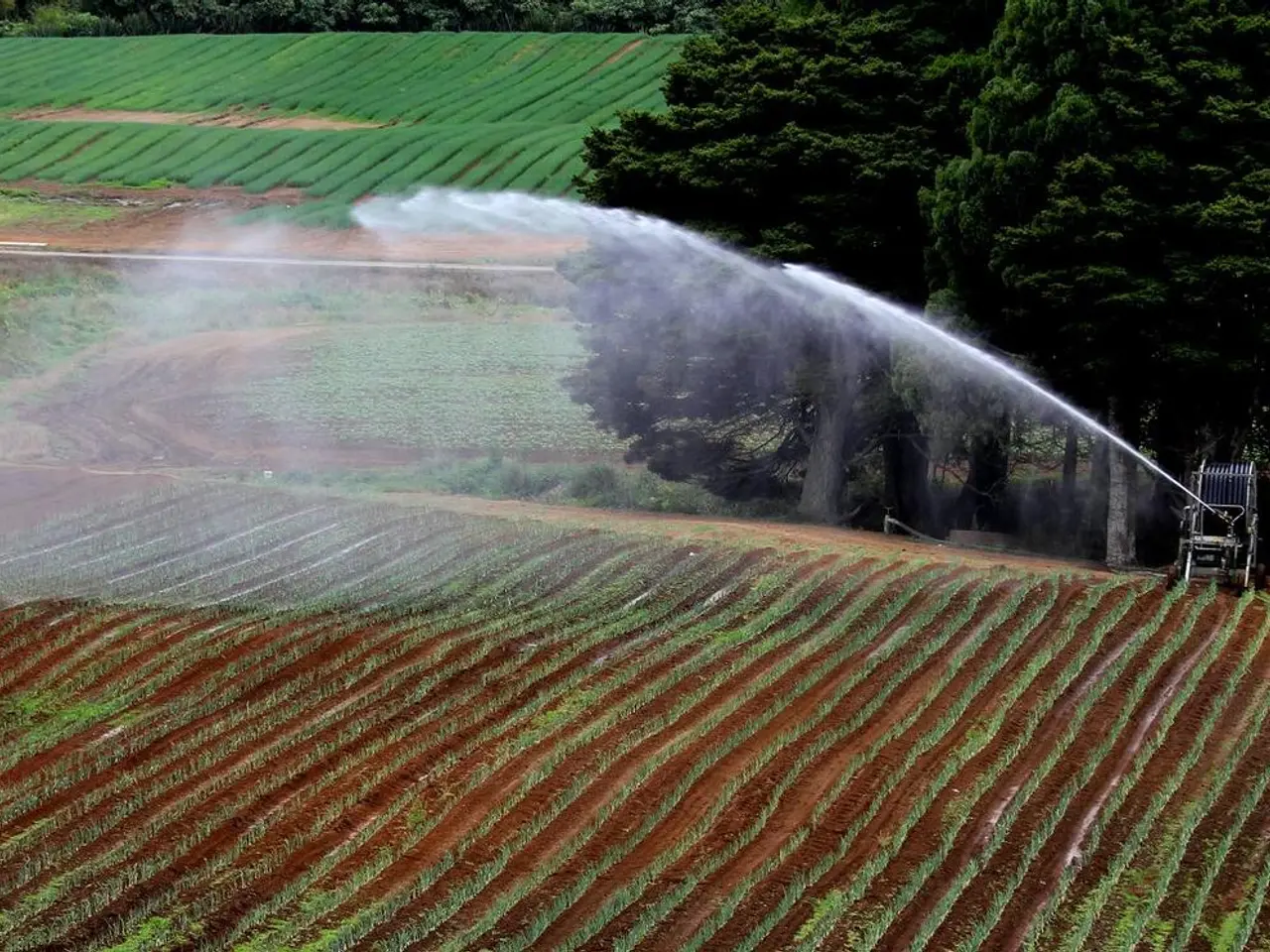Achieving a Developed India by 2047 Depends on 5% Steady Agriculture Growth, as Stated by Shivraj Singh Chouhan
Union Agriculture Minister Shivraj Singh Chouhan recently outlined a comprehensive roadmap for the future of Indian agriculture at the Annual Conference of Vice-Chancellors of Agricultural Universities and Directors of ICAR Institutes. The Minister's vision is deeply tied to the prosperity of agriculture and farmers, as he aims to make agriculture a significant contributor to India's aspiration to become a $5 trillion economy.
Aiming High for Agriculture Exports
To achieve this ambitious goal, Minister Chouhan stressed the need to increase agriculture exports from the current 6% to at least 20%. He acknowledged that certain challenges, such as the low growth rate of 1.5% in pulses and oilseeds and the wide disparity in productivity across different states, must be addressed.
Foundational Pillars for Increased Productivity
The Minister highlighted agricultural education, research, and extension as the foundational pillars necessary for increased productivity and reduced input costs. He emphasized the importance of maintaining a 5% growth rate in agriculture, which is crucial for achieving a developed India by 2047.
Embracing Modern Technologies
Minister Chouhan emphasized the use of modern technologies and bridging the gap between laboratory research and its practical application on farms. He expressed confidence that the target of maintaining a 5% growth rate in agriculture is not only realistic but also achievable.
Boosting Productivity through Targeted Planning
The conference discussions focused on making agriculture more developed and farmer-centric, with strong collaboration between agricultural universities, ICAR's 113 institutes, 731 Krishi Vigyan Kendras, and state agricultural departments under the unifying theme of "One Nation - One Agriculture - One Team."
Minister Chouhan has emphasized the need for targeted planning and research prioritization for major crops like pulses, oilseeds, soybean, cotton, and sugarcane to enhance productivity. The integration of biofortified crops is part of the strategy to improve nutritional content and enhance crop resilience.
Reducing Input Costs
The government plans to enact laws to prevent the sale of counterfeit seeds, fertilizers, and pesticides, which would help protect farmers from using substandard inputs and reduce costs associated with failed crops. The Natural Farming Mission is aimed at long-term sustainability, reducing the reliance on expensive chemical inputs and promoting eco-friendly methods.
Infrastructure and Support
Strengthening Krishi Vigyan Kendras through dedicated nodal officers and mandated field engagement by scientists will help disseminate best practices and technologies directly to farmers. State authorities are implementing measures such as crop insurance, interest-free loans, and reliable electricity supply to support farmers and stabilize their income.
Inclusive Growth
Efforts like ASSOCHAM’s AgriBiz Connect aim to transform agriculture into a value-driven industry by aligning traditional farming with innovation and market linkages. Given the continuous decline in landholding sizes, the Minister emphasized the importance of diversification into allied activities such as beekeeping, fisheries, animal husbandry, and horticulture.
Addressing imbalances, such as the higher maize yields in Tamil Nadu compared to Uttar Pradesh, will require clearly defined roles and coordinated efforts from all agricultural stakeholders.
Achieving $1 Trillion in Agriculture Contribution
Minister Chouhan emphasized that agriculture must contribute $1 trillion to India's aspiration to become a $5 trillion economy. Time-bound goals are being set both for the short and long term, with focused discussions underway on improving water efficiency, enhancing crop yields, and ensuring the overall prosperity of farmers.
While these strategies are not directly from the specific conference, they provide a comprehensive overview of the approaches being considered to enhance productivity and reduce costs in Indian agriculture under Minister Chouhan's leadership. Recent achievements in genome editing, including the development of two new rice varieties, with similar advancements underway in soybeans, pulses, black gram, chickpeas, and pigeon peas, serve as a testament to the government's commitment to agricultural innovation. Shivraj Singh Chouhan thanked Prime Minister Modi for allocating budget funds for establishing a new gene bank.
The Minister's roadmap for Indian agriculture sets a clear path towards a more prosperous and sustainable future for farmers and the nation as a whole.
Read also:
- Show a modicum of decency, truly
- VinFast's debut EV plant in India, Tata Harrier EV distribution starts, next-gen Mahindra Bolero sightings caught on camera
- Tesla-powered residences in Houston create a buyers' frenzy
- Ford accelerates electric vehicle production with a $2 billion restructuring of its Kentucky factory.




